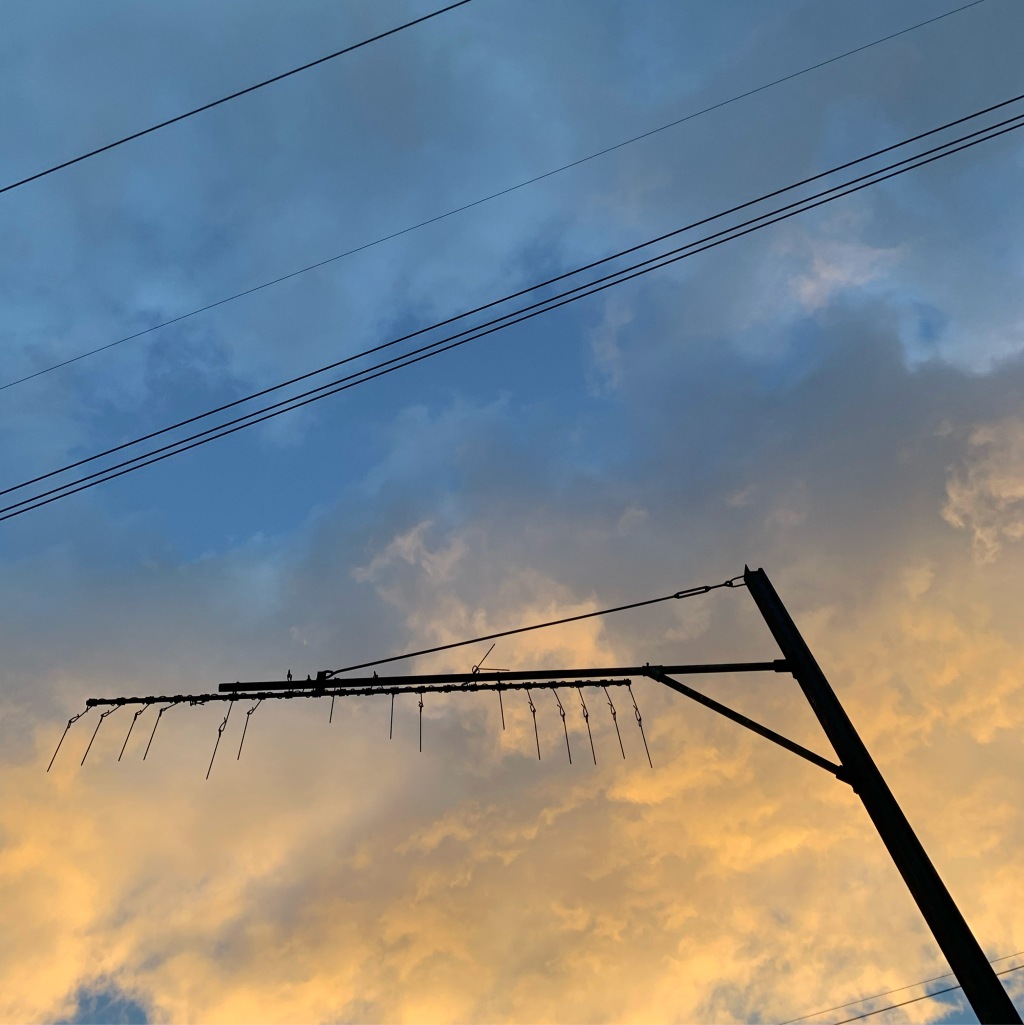Central New Hampshire, October 2022

I’m jogging through central New Hampshire along the old Northern Line of the now-defunct Boston and Maine, or B&M, Railroad.
The tracks are long gone, and it’s now a tree-lined recreational trail for pedestrians and cyclists that in winter turns into a snowmobiling race course.
It’s the peak of autumn and I imagine a train chugging through the tunnel of colourful foliage: reds, oranges, yellows, purples. Some late greens. Early browns.
I’m suddenly transported back to age eleven, and I’m buying a model train set at home in Melbourne, Australia.
The model train is funded by my maternal grandma Ruth, who has sent my sister Alex and me cash after her original parcel of presents disappears somewhere between the USA and Australia. To this day, we’re convinced a missing syllable on the address label – either by Ruth’s own hand or the holiday-season-blurred vision of a postal sorter – meant that some lucky Austrian child awoke that Christmas to a battered United States Postal Service box of eclectic treats and curiosities uniquely assembled in the way only my grandma could.
The model train is inspired by a nostalgic image my mum describes of how, during childhood summers spent by a lake in the New Hampshire woods, her father Herb would wave down a train and hop on board for the trip south to work in Boston.
It’s a place I know well, and as Herb is no longer alive to be quizzed on details, I easily paint images where the gaps exist: I imagine him walking to the tracks, dressed dapperly in a Brooks Brothers three-piece wool suit and bowtie, trench coat draped over an arm, morning paper folded into the pocket of his leather case, his burgundy leather dress shoes crunching on the greasy ballast as he hails the locomotive with a prolonged wave with his hat.

Magically I find the exact B&M locomotive at the model train store in Melbourne. Who knew the American rail network could exist in such manicured 1:160 scale perfection, in Australia no less? The blue, black and white engine is a tiny window into an era I long to experience.
The model train is being set up on the living room floor of my paternal grandparents, Hellmut and Gerti, on a cold, rainy and perfect-for-indoor-play kind of afternoon. The Turkish rug is rolled back and held in place with Hellmut’s timber chess table to expose glossy parquet squares where a three-metre length of tiny replica railway track runs.
Barely a centimetre wide, the metal rails and plastic sleepers start near the timber doors that hide the TV and liquor cabinet, gently wiggle halfway across the room and end abruptly near the dried porridge-textured couch.
I crouch over the track. As he used to do with my dad and his model train set, Hellmut kneels beside me. He’s wearing a dark green knitted jumper and gull-grey wool-polyester blend pleated pants. He must have a half-dozen sets; aside from a pair of increasingly faded blue jeans that eventually earn themselves fresh denim knee pads from my grandma’s sewing machine, he seems to wear them rain, hail, shine, gardening, dining – except for summer, when he replaces them with shorts of a similar fabric and palette.
The model train tracks don’t quite reach Gerti in the kitchen, where she and Alex prepare dinner: thin vegetable soup, defrosted and decanted from a reused plastic Jalna yogurt container, each bowl regimented with one or two carrot slices, a couple pieces of celery or broccoli, a sliver of onion, perhaps a rogue spiral pasta piece (always only one spiral), the tiny grey-blue remnant of a chicken vein from the homemade broth. Leftover sliced beef in a tomato sauce simmers in a ceramic bowl in the oven.
Alex and I love sleepovers at Hellmut and Gerti’s house. We eat some of our favourite foods and normally play with the Lego set, my dad and uncle’s childhood collection of cowboys, indians and farm animals, or the pre-threaded bobbins on my grandma’s sewing machine, which are especially fun to unravel when she’s not looking.
The model train captivates me this afternoon, however.
I twist the dial on the little electrical controller wired to the tracks. A half-second later I hear the zzoommhh of electricity. Hellmut gives a triumphant “oh ho!” and I grin as the perfect miniature locomotive and its four miniature carriages charge across the parquet floor, honeyed like autumn foliage.
This is also where fragments of fictional and real events, places and people hitch themselves, like the couplings of the tiny carriages at my knees, into one false image.
All four of my grandparents float together through this scene. I see Gerti and Alex rush in from the kitchen to watch. I see Herb hailing the train, right there in that Melbourne living room. I hear the crackle of the Cat Stevens vinyl my mum plays that morning at our own house, but it’s become a soundtrack for the entire day. I see Ruth posting the package to nowhere that inadvertently brings this entire scenario into being.
It may be a false flag, but I like it. Because it’s the only time I see all four of my grandparents together in one association. In reality, while they’d individually met each other at different times, living as they did on opposite sides of the globe, they never all four gathered at the same moment.
I’m suddenly back jogging the full-scale version of my childhood memory. A handful of kilometres further along the trail, on a surviving piece of railway track, sits an actual B&M boxcar.
Memories breathe. They’re malleable to our mood, our ageing, our desire, our imagination. For better or worse or neither, that’s how they live on. They may stretch the truth or recreate it. But for this particular trip down the rails of recollect, I’m all aboard.


